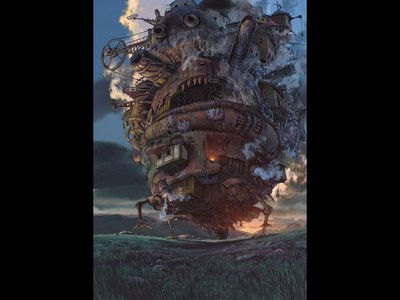Howl's Moving Castle

This week will see the DVD release of Howl’s Moving Castle – Hauru no ugoku shiro - directed by Hayao Miyazaki. Of course, this should be the English-dubbed version so, if you do not speak Japanese - fear not. If you have not seen a Studio Ghibli film, you are missing out on one of this life’s finer delicacies. Hayao Miyazaki’s films are far more sophisticated than your standard animation. Now admittedly, there is plenty of Japanese anime garbage – vacuous, uninspired characters and shallow, unoriginal stories – but Miyazaki’s stories are creative and detailed. I also like the fact that he does not insult our intelligence and certain films, like Porco Rosso, can be appreciated by adults. The sound tracks are usually composed by Joe Hisaishi who also gives us music indicative of a feature film and not of a cartoon made to amuse children. Unlike many Disney films, Ghibli films do not, as movie-critic Lisa Schwarzbaum aptly points out, "substitute self-reference for original wit and pop songs for emotional content.” Two other Ghibli films you might check out are Spirited Away and Grave of the Fireflies.
Animation note – A key animation is a single frame of the movie while the in-betweens are all the other frames drawn to connect key animations. The in-betweens are what allow us to see a smooth flow of action. There are usually ~1200 key animations for a Ghibli film; ~1400 for Spirited Away. So how many total in-betweens are there? The number of in-betweens actually depends on the speed of the action between one key to the next. Fast action scenes, such as punching or sword-fighting, can have as few as three in–betweens while other slower-paced scenes, can have more than ten.
Animation note – A key animation is a single frame of the movie while the in-betweens are all the other frames drawn to connect key animations. The in-betweens are what allow us to see a smooth flow of action. There are usually ~1200 key animations for a Ghibli film; ~1400 for Spirited Away. So how many total in-betweens are there? The number of in-betweens actually depends on the speed of the action between one key to the next. Fast action scenes, such as punching or sword-fighting, can have as few as three in–betweens while other slower-paced scenes, can have more than ten.


0 Comments:
Post a Comment
<< Home (ホームページ)